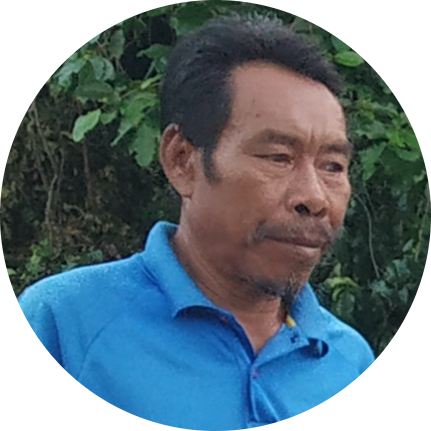
Name : Mr. Patrick J
Village : Big Lapathy
Phone : 9474236082
Family size:5
Total Land area : 1ha
Number of Livestock : 7 pigs, 12 poultry birds & Crop area:0.75ac


Name : Mr. Patrick J
Village : Big Lapathy
Phone : 9474236082
Family size:5
Total Land area : 1ha
Number of Livestock : 7 pigs, 12 poultry birds & Crop area:0.75ac
Agriculture in Car Nicobar is rainfed and depends on the performance of monsoon. Due to the absence of storage facility and no irrigation infrastructure, rainwater harvesting and its effective utilization is the only way to increase the agricultural production and diversification. The soil in this island is sandy and highly porous with low water retention capacity. Under such limitations, in-situ rainwater harvesting will promote crop diversification in this island. Though coconut is the major plantation crop, tuber crops and vegetables are grown in home gardens and or community gardens during the rainy season (May to November). During dry period (January to May) leafy vegetables like amaranthus are grown in very small area in their home garden due to scarcity of water. So as to reduce the water scarcity during dry months, a small scale lined pond was designed and implemented at farmer’s field to harvest the rainwater during rainy season.
A pond was made in an area of 30 m2 with a capacity of 45 m3 (6 x 5 x 1.5 m) and lined with LDPE pond Liner during March – April 2019. The cost making of pond at Car Nicobar was Rs. 50,000. At the end of rainy season, about 40 m3 (1m3=1000 lit) of rain water was collected and stored in the pond. The harvested rain water was used to irrigate vegetables and tuber crops (0.20 to 0.25 ha area) grown during dry months. Due to the availability of water, grown okra, brinjal, chillies, bitter gourd, bottle gourd, snake gourd and amaranthus were grown in an area of 400 m2 and harvested a vegetable yield of 300-425 kg during the dry months. The water was also used for providing water to livestock (Nicobari pig). The utility of the pond was highly appreciated during the lockdown period in 2020, which helped the farmers to meet out their vegetable requirement.
Before the intervention, the tribal diet is dominated by tuber crops (Greater yam, tapioca, sweet potato and leafy vegetables). The use of vegetables is very much limited due to non availability and has to be imported from Port Blair which is again constrained by shipping schedule for transportation. Moreover, the costs of such vegetables are very high, resulting in non consumption affecting the nutritional security of the household. With the intervention, an average farmer could produce 1-1.25 kg diversified vegetables on their farm itself leading to increased vegetable consumption. The productivity of pigs was also increased. The marketable surplus was sold out or shared in the community which has increased their purchasing power.
Through the sale of surplus vegetables, the farmer has generated an income of Rs.1500 -2000 during the dry months.
The lined ponds can be disseminated to all the remote, isolated islands of Nicobar region which will help them to tide over the water scarcity during dry months besides enhancing nutritional security of the people in such far away places. The government subsidy or government programmes through line departments will play a significant role in increasing the water availability in such areas.
Contributors : T Subramani, A.Velmurugan , S.K.Pandey, Zacharia George, T.P. Swarnam and B Gangaiah